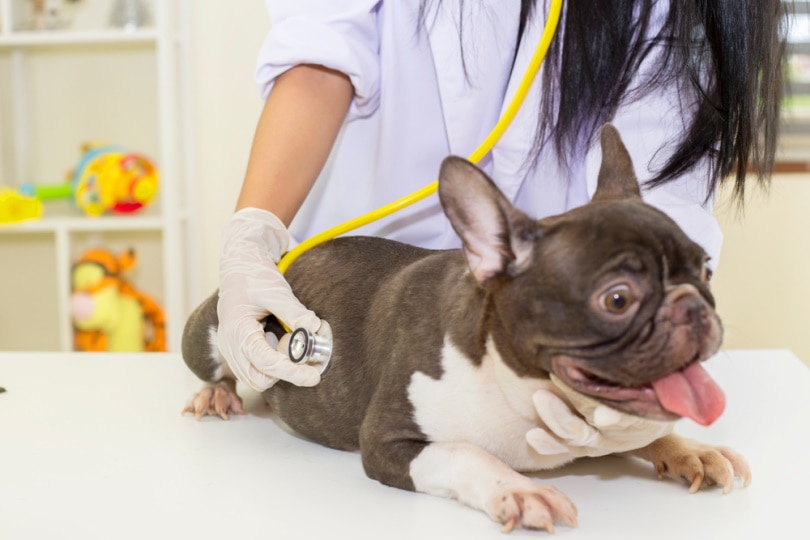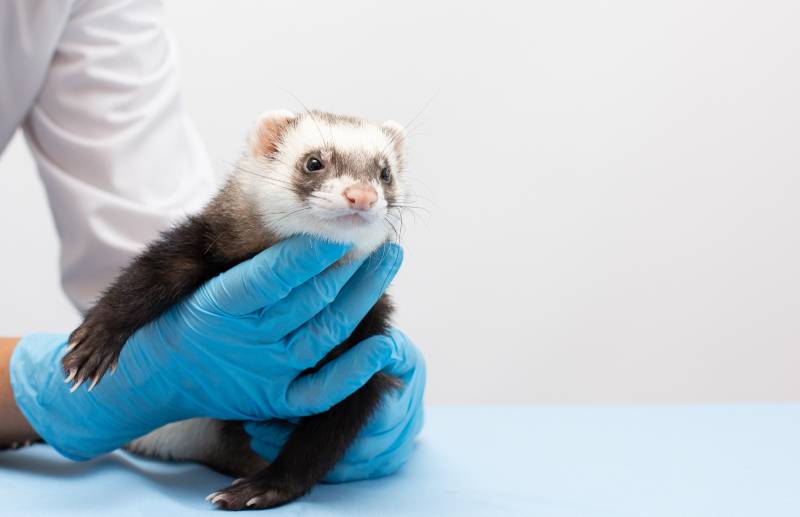How Do Vets Get Stool Samples From Cats: Our Vet Answers

Updated on
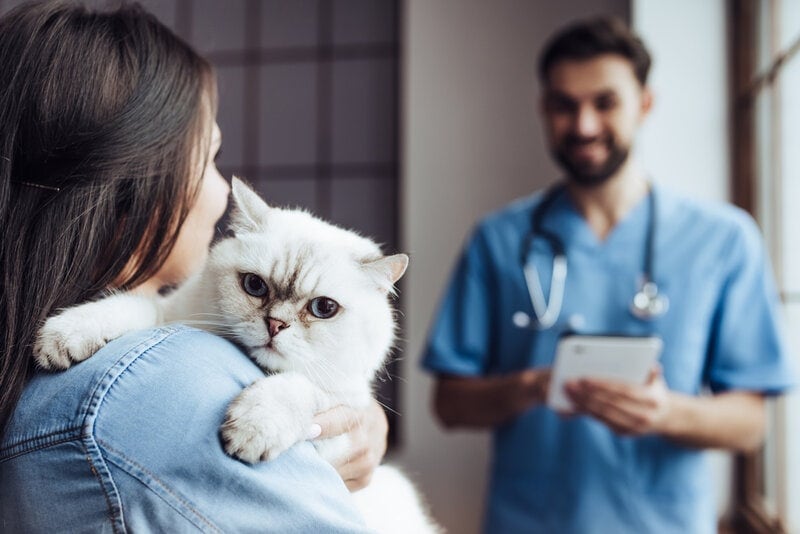
“We need a stool sample from your cat,” your veterinarian might have declared at some point in your paw-renting journey. Sounds icky, doesn’t it? Why do vets even bother with examining smelly stools (feces)?
Your vet can get a fresh stool sample during your cat’s physical exam. Sometimes, your vet may use a special fecal loop to collect poop during the physical exam.
 Why Do Vets Need Stool Samples From Cats?
Why Do Vets Need Stool Samples From Cats?
Fecal (stool) examinations are important for routine assessment of healthy cats and for diagnosing sick cats. Sometimes, your vet may require a stool sample to check for dangerous bacteria and viruses. Vets also use stool samples to check for gut parasites. Stool samples are the best way to check for gut parasites as some infected cats do not show any signs. Untreated gut parasites can be serious as they can make some cats very sick. Furthermore, some gut parasites can infect people with devastating consequences. For instance, roundworms from cat stools can cause blindness in people!
Therefore, to keep you and your household safe, the Companion Animal Parasite Council (CAPC) recommends that fecal exams should be conducted, “…at least four times during the first year of life, and at least two times per year in adults, depending on patient health and lifestyle factors.”
We have established that collecting your cat’s stool sample is important. However, you may be wondering how vets get stool samples from cats. This article will explain how vets obtain these stool samples, how pet parents can help their vet, and how long a fecal test takes for a cat.
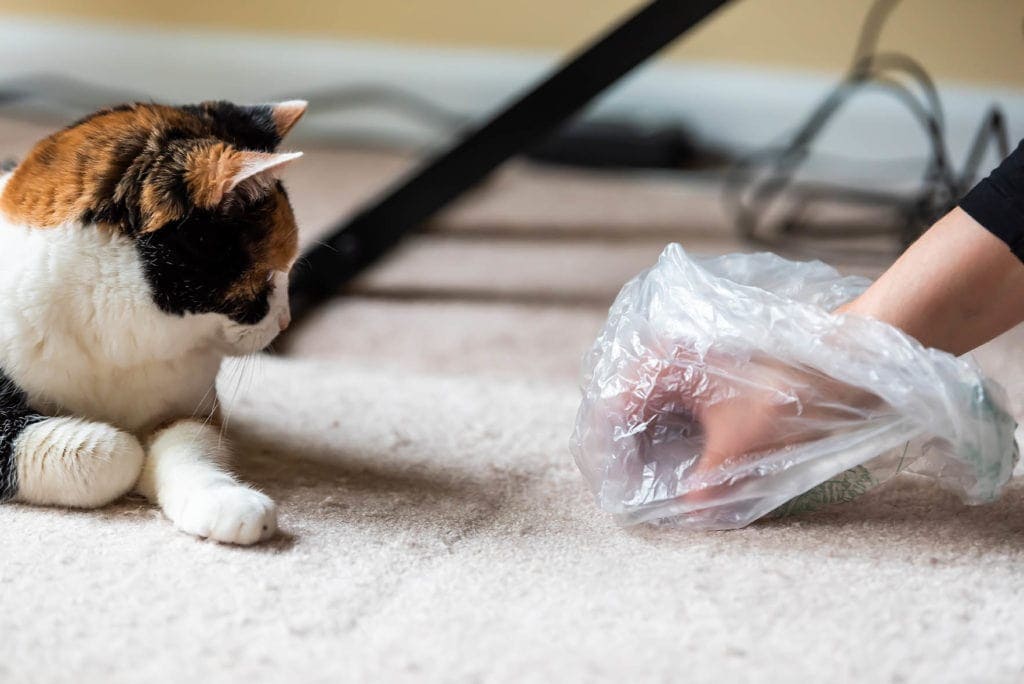
How Do Vets Get Stool Samples From Cats?
Your vet can get a fresh stool sample during your cat’s physical exam. The best scenario would be for your cat to poop a fresh, steaming pile on your vet’s desk!
However, life is not always smooth-sailing, and cats do not always poop at strategic times. In this case, your vet may use a special fecal loop to collect poop during the physical exam.
What Is a Fecal Loop?
A fecal loop is a long, narrow wand with a small loop at the end. Your veterinarian will gently insert the loop into your cat’s rectum and then withdraw it. If poop is present in the loop, it will be used as a sample.
While fresh poop can be collected with a fecal loop, this method has a couple of disadvantages. The amount of poop collected with a loop may not be enough to run accurate tests. The CAPC states that, “The average sample size obtained with this method is only about one-tenth of a gram,” when at least 5 grams (or 0.2 ounces) of sample is usually needed.
Furthermore, your cat will not be thrilled with a loop being shoved up his or her bum! For these reasons, many vets ask pet parents to collect stool samples from their cats’ litter trays instead.
How Do Pet Parents Get Stool Samples From Cats?
At this point, you may be wringing your hands at the thought of collecting stool samples. You may think, “What if the vet rejects my sample? What if I accidentally infect myself with worms?” Fear not! This section will teach you how to collect stool samples from your cat in a safe and hygienic manner.
Here is the step-by-step guide to collecting your cat’s stools.
Part One: Preparation (Before You Collect the Stool Sample)
1. Prepare the Following Materials Beforehand
- Medical gloves (can be bought from a pharmacy)
- Clean, unused plastic container (for storing the poop)
- Disposable plastic spoon
Alternatively, you could ask your veterinarian if they could provide you with these materials.
2. Label the Plastic Container
Make sure you clearly label the container with your cat’s first name, last name, age, the date and time of sample collection, and any other details that your clinic requires.
3. Determine How Much Sample You Need
Generally, you will only need 0.2 ounces (1 teaspoon) of stool per fecal test. However, double-check with your veterinarian, as they may need more stool to run the required tests.
Part Two: What to Do During Sample Collection
4. Collect Your Sample
After your cat has pooped in his or her litter tray, collect the sample. Wear your gloves first. Using the plastic spoon, scoop the poop into the labeled plastic container. If a few pieces of cat litter are present in the sample, it will not affect the test results.
5. Keep the Sample in the Cup!
When placing the sample in the container, please ensure that the sample does not contaminate the edges or the outside of the container.
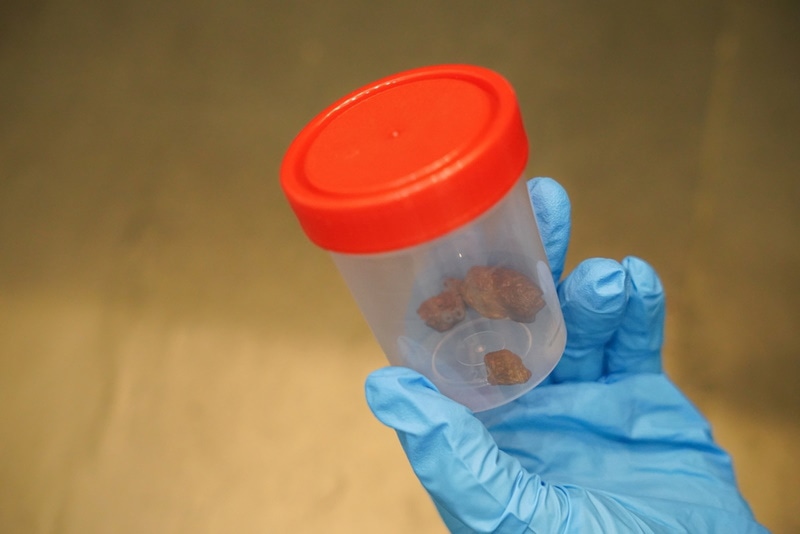
6. Clean Up
After you have collected your stool sample and sealed the container, throw away your gloves and the plastic spoon. Wash your hands before touching anything else.
Part Three: Storage and Transport of Stool Samples
7. Stool Samples Should Be as Fresh as Possible
Once your cat has passed stool, it should be collected and taken to the vet immediately. If this is not possible, please ask your vet if the sample can be refrigerated, as some gut parasites are best detected in fresh, non-refrigerated stool samples. Your vet will advise you accordingly.
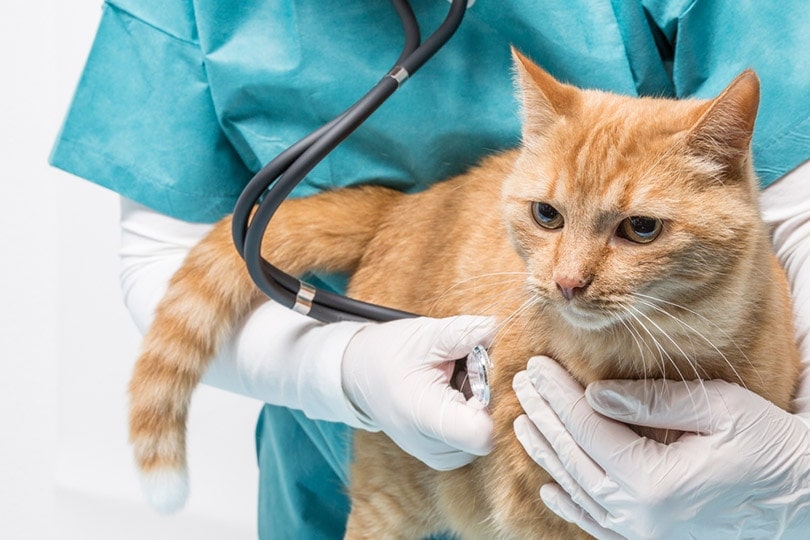
8. If Your Vet Gives the Go-Ahead to Refrigerate the Sample, Please Do So
If a stool sample is not submitted immediately, it should be kept refrigerated until submission. However, stool samples should never be frozen. To prevent contamination of your food, ensure that the stool sample is kept in a separate compartment from the rest of the fridge’s contents! It is best to place the stool sample container in a Ziploc bag to minimize the smell.
9. Deliver the Sample
Generally, stool samples should be delivered to the vet clinic within 24 hours from the time your cat passed the stool. If samples are too old, bacteria will multiply and parasite egg counts will decrease. Therefore, test results will be inaccurate.
Frequently Asked Questions
How can I get a stool sample from a cat that only poops outdoors?
If your cat only poops outdoors, you will have to bring your cat indoors and isolate your cat in a room with a clean litter tray. If your cat is too feral for this, please speak to your vet for personalized advice.
What if I am pregnant or have a weak immune system?
Pregnant women, young children, and people with weak immune systems should not collect stool samples. People in these categories are more likely to fall very sick if they accidentally get infected with gut parasites after collecting stool samples.
If you live in a multi-cat household, you will have to isolate the cat whose stool sample you need. Place this cat in a room with a clean litter tray, shut the door, and check the litter tray often for stool.
What happens after my vet gets the stool sample?
Even after you hand in your cat’s stool sample, your job may not be done! To check for gut parasites, your vet may require multiple stool samples from the same cat, with each sample collected on a different day. This is because infected cats shed parasite eggs on and off in their stools.
How long does a fecal test take for a cat?
It depends on the type of tests that your vet wishes to run. Some tests can be done in the clinic and the results will be available the same day. Occasionally, vets may submit stool samples to external laboratories and results may take several days.
In conclusion, cat paw-rents play an important role in collecting their cats’ stool samples.
If you have read through the article and you are still unsure about collecting the stool samples correctly, your vet will be more than happy to assist you.
 Conclusion
Conclusion
Once your vet has accepted the stool samples, the process is out of your hands. All you can do is kick back, have a coffee, and wait for the test results. With time, you will become a super scooper. More importantly, you will gain confidence in paw-renting your cat(s). Also, you may eventually overcome the embarrassment of transporting smelly baggies of poop to your vet’s office!
See also:
- How to Tell if a Cat Has Worms: Vet-Reviewed Signs & Symptoms
- How to Tell If a Cat is in Labor: 6 Vet-Recommended Signs to Look For
Featured Image Credit: 4 PM production, Shutterstock

 Why Do Vets Need Stool Samples From Cats?
Why Do Vets Need Stool Samples From Cats?